What Is Trekking
Trekking often takes place in remote, high-altitude locations and may involve navigating more difficult terrains, including steep ascents, descents, rocky paths, and sometimes even glaciers or snowfields.
Trekking often takes place in remote, high-altitude locations and may involve navigating more difficult terrains, including steep ascents, descents, rocky paths, and sometimes even glaciers or snowfields.

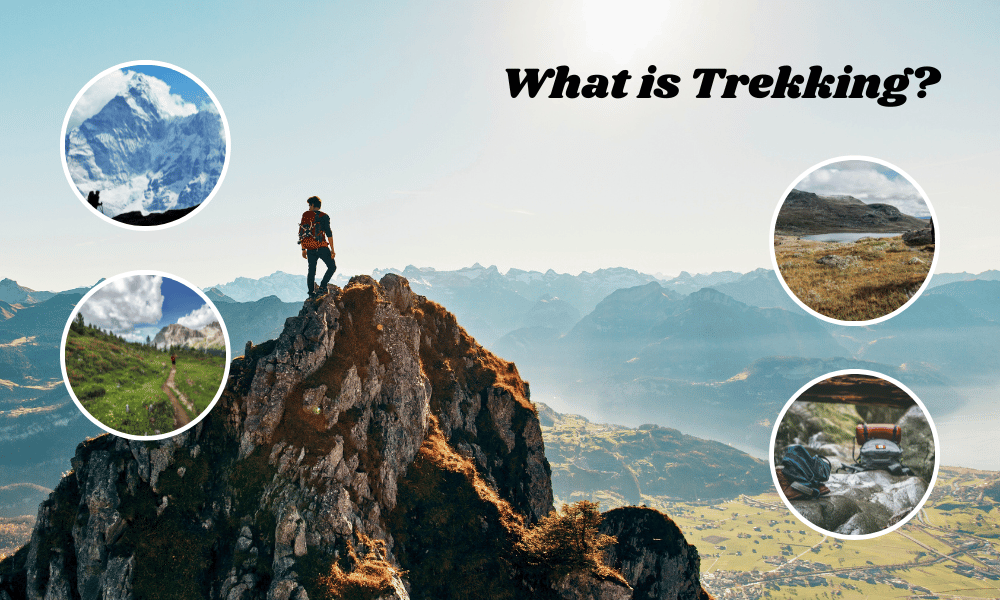
In our fast-paced modern world, the lure of nature, adventure, and tranquility calls to many of us, inviting us to break away from the confines of concrete jungles and venture into the wilderness. This is where trekking comes into the picture, an activity that beautifully combines outdoor adventure with personal growth. But what exactly is trekking, and how did it originate?
Trekking is a long-distance, often multi-day outdoor activity where one hike through rural, often rugged terrain. The term was coined in the 19th century during the Great Trigonometrical Survey of India where workers had to traverse through challenging terrains on foot to chart out the subcontinent. From its pragmatic roots, trekking has evolved into a much-loved recreational activity around the world.
The relevance of trekking today cannot be understated. It is not just about traversing from one point to another; it's about embarking on a journey to explore the beauty of nature, challenge oneself, and reap physical, mental, and emotional rewards. Whether you are a seasoned trekker or someone planning to embark on your first trek, understanding the nuances of this activity can enhance your experience significantly.
In this blog, we will delve deep into the world of trekking. We will explore its different forms, the benefits it offers, and the essential gear one needs to have. We will also provide tips on how to prepare for a trek, discuss some popular trekking destinations, and highlight the importance of being a responsible trekker. By the end of this piece, you'll not only understand what trekking is, but you'll also be armed with the knowledge to embark on your own trekking adventure. Let's take the first step into this fascinating journey together.
Before we delve further into the world of trekking, it's important to first establish a clear understanding of what it involves, how it compares and contrasts with similar outdoor activities, and the different forms it can take.
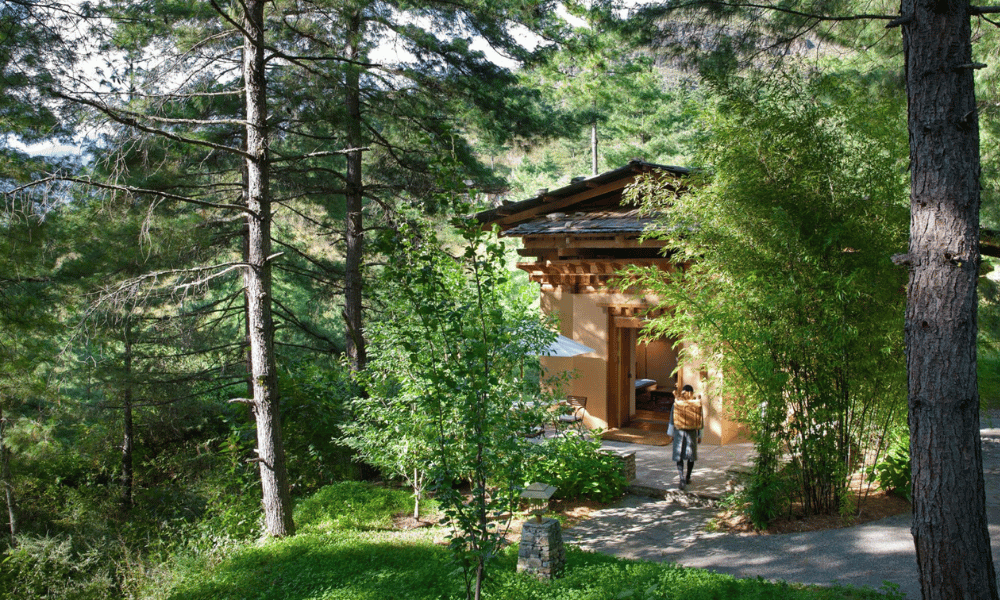
Trekking is an extended, often multi-day activity that involves walking and hiking, usually on trails or paths in areas of natural beauty. Unlike a simple walk or day hike, a trek typically takes place in a setting where transportation infrastructure is less developed, and participants carry their own food, water, and camping equipment.
While it's often used interchangeably with hiking, trekking is usually longer and more challenging. Hiking is generally understood as an outdoor activity that involves walking in natural environments, typically on pre-made trails. Hikes can last from an hour to a whole day, but rarely extend beyond that.
Backpacking is another term you may have heard in conjunction with trekking. It's essentially a combination of hiking and camping, often over the course of several days or even weeks. Backpackers carry their essential gear - including food, water, and shelter - in their backpacks, hence the name.
Mountaineering, on the other hand, is a more specialized and technical form of trekking that involves ascending mountains. It often requires specific equipment and knowledge of climbing techniques, and it entails a higher level of risk compared to hiking or trekking.
There are also different types of trekking, each offering a unique experience:
1. Day Treks: These are single-day treks that usually start and end at the same point. They are suitable for beginners and those who want to experience trekking without committing to multi-day journeys.
2. Multi-day Treks: These involve trekking for more than one day and camping overnight. They offer a deeper immersion in nature and can range from easy to very challenging, depending on the terrain and distance.
3. Teahouse Trekking: Popular in countries like Nepal, teahouse trekking involves trekking from one mountain lodge or 'teahouse' to another. These treks can last several days, but trekkers don't have to carry camping gear as they'll be staying in basic lodgings along the way.
4. Expedition Trekking: This is the most challenging form of trekking, often involving ascents to high altitudes, and lasting for several weeks or even months. Expedition trekking usually requires a team, including guides and porters, and involves thorough preparation and considerable physical fitness.
By understanding these different forms and related concepts, you can choose the type of trekking experience that best suits your interest, experience level, and physical fitness.
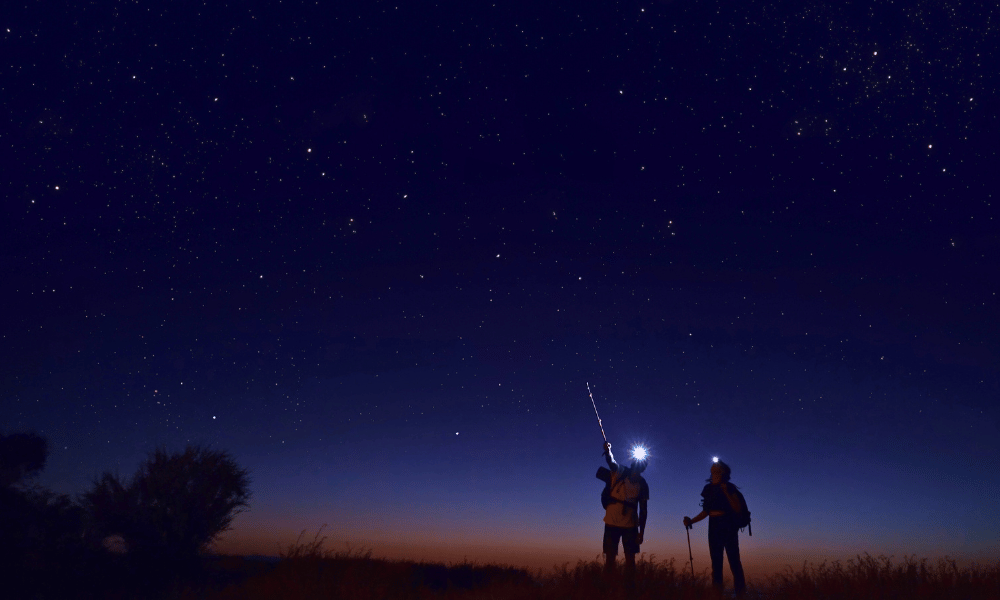
Trekking and hiking are both outdoor activities involving walking in nature, but there are key differences between the two, primarily in terms of duration, difficulty, and terrain.
Duration: Hiking typically refers to day trips that can last a few hours to a full day. Hikers generally return to their starting point or accommodation by the end of the day.
Difficulty: While the difficulty can vary greatly depending on the trail, hiking is generally considered less strenuous than trekking. Hikes usually follow well-defined trails and do not require significant navigational skills.
Terrain: Hiking trails can range from flat and easy paths in the woods to steep mountainous trails. However, these trails are usually well-marked and maintained.
Equipment: Basic hiking gear typically includes comfortable walking shoes, a backpack, water, snacks, and possibly a map or a hiking app. Camping gear is not usually necessary for hikes as they typically do not involve overnight stays in the wilderness.
Duration: Trekking involves multi-day trips that can last several days to weeks. Trekkers often camp or stay in huts or tea houses along the trail.
Difficulty: Trekking is generally more strenuous and physically demanding than hiking. It often involves long distances, significant changes in elevation, and more challenging terrains.
Terrain: Trekking often takes place in remote, high-altitude locations and may involve navigating more difficult terrains, including steep ascents, descents, rocky paths, and sometimes even glaciers or snowfields.
Equipment: In addition to what you would bring for a hike, trekking often requires more specialized gear, such as tents, sleeping bags, cooking equipment, and potentially even mountaineering gear for high-altitude treks.
While both hiking and trekking allow you to enjoy nature and stay active, the choice between the two often depends on your physical fitness, the amount of time you have, and the level of adventure you're seeking. If you're new to these activities, it's typically recommended to start with shorter, easier hikes and gradually work your way up to more challenging treks.
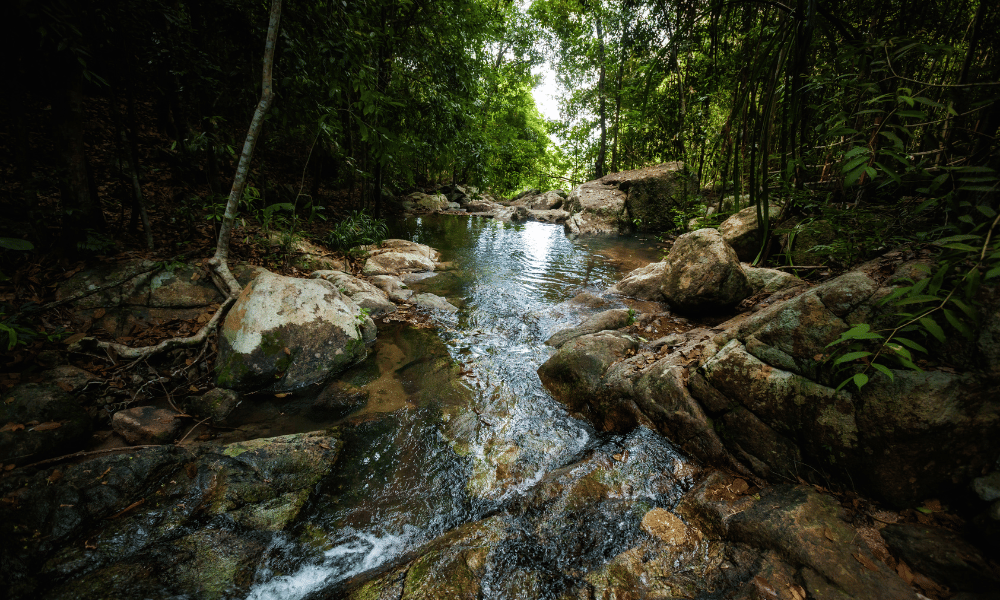
Trekking, as we know it today, has a rich and varied history. While walking long distances has always been a necessity for humans in prehistoric times due to a lack of transportation, the concept of trekking for leisure or adventure developed more recently.
The origin of modern trekking can be traced back to the 19th century during the Great Trigonometrical Survey of India, a project aiming to measure the entire Indian subcontinent. British surveyors had to 'trek' through challenging terrains on foot, often for weeks or even months at a time, to record the geographical features of the land. Thus, trekking started more as a professional necessity than a recreational activity.
As the romance of exploration grew, coupled with the advancements in transportation and leisure time in the 20th century, trekking transformed into a popular recreational activity. It was further popularized by several notable expeditions, such as Sir Edmund Hillary and Tenzing Norgay's successful ascent of Mount Everest in 1953. This ushered in an era where the allure of exploring remote locations, encountering different cultures, and achieving personal milestones became a significant motivation for many.
Over time, trekking has evolved and branched out into various forms we see today, such as day treks, multi-day treks, teahouse trekking, and expedition trekking. The development of specialized equipment, trail infrastructure, and the growth of outdoor recreational companies also significantly contributed to making trekking more accessible and enjoyable for people of varying fitness and experience levels.
The impact of trekking on global exploration and outdoor recreational activities is profound. It has not only enabled us to reach and appreciate some of the most remote and beautiful parts of our planet, but it has also played a key role in promoting physical fitness, mental health, and environmental awareness. Today, trekking is a significant part of the global tourism industry, contributing to local economies, especially in regions known for their natural beauty.
As we look back at the trekking history, it's clear that it's much more than just an outdoor activity. It's a testament to human curiosity, exploration, and our deep-rooted connection with nature. And as we move forward, it continues to adapt, offering even more ways for us to engage with the natural world.
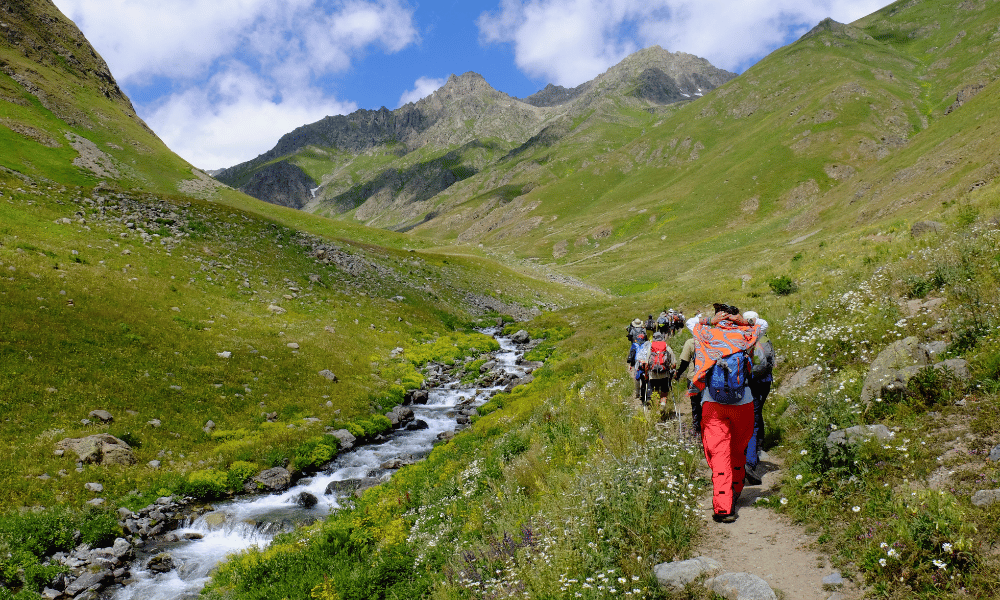
The allure of trekking varies greatly from person to person, and the motivations behind embarking on these ventures can be just as diverse as the trekkers themselves. Here, we explore the common reasons why people choose to trek and gain insights from experienced trekkers on what fuels their passion for this activity.
1. Adventure: Many are drawn to trekking for the sheer thrill and excitement that it provides. The prospect of navigating rugged terrains, overcoming physical challenges, and immersing oneself in the wilderness is an adrenaline boost for adventure seekers.
2. Fitness: Trekking is a fantastic way to improve physical fitness. It offers a full-body workout that combines cardio and strength training, making it an enjoyable way to stay active and healthy.
3. Nature Appreciation: Trekking offers a unique opportunity to connect deeply with nature. It provides an escape from the hustle and bustle of city life and a chance to experience the beauty and serenity of the natural world up close.
4. Spiritual Journey: For some, trekking is a spiritual or introspective journey. The act of walking for days on end, often in solitude, allows for reflection and inner peace. Many trekkers also embark on specific spiritual treks like the Camino de Santiago in Spain or the Kailash Mansarovar Trek in Tibet.
5. Cultural Exploration: Trekking routes often pass through rural and remote areas, offering trekkers the opportunity to interact with local communities, experience their traditions, and gain a unique cultural insight that would otherwise be difficult to achieve.
6. Challenge and Personal Achievement: For many, the challenge of trekking, especially multi-day or high-altitude treks, is a motivating factor. Completing a challenging trek is often seen as a significant personal achievement and can provide a real sense of accomplishment.
To get a deeper understanding, we've asked seasoned trekkers about their motivation. One shared, "For me, trekking is like a form of meditation. The rhythmic motion of putting one foot in front of the other, the sounds of nature, the physical exertion - it all helps me to quiet my mind and find inner peace." Another said, "I love the challenge. Testing my limits and pushing past them, that feeling of achievement when I reach the destination - it's a rush like no other."
Everyone has a different reason to trek, and these motivations often overlap. Whether you're seeking adventure, personal growth, fitness, or a deeper connection with nature and other cultures, trekking has something to offer. It's a multifaceted activity that provides more than just a journey from one point to another; it's a journey of self-discovery and personal evolution.
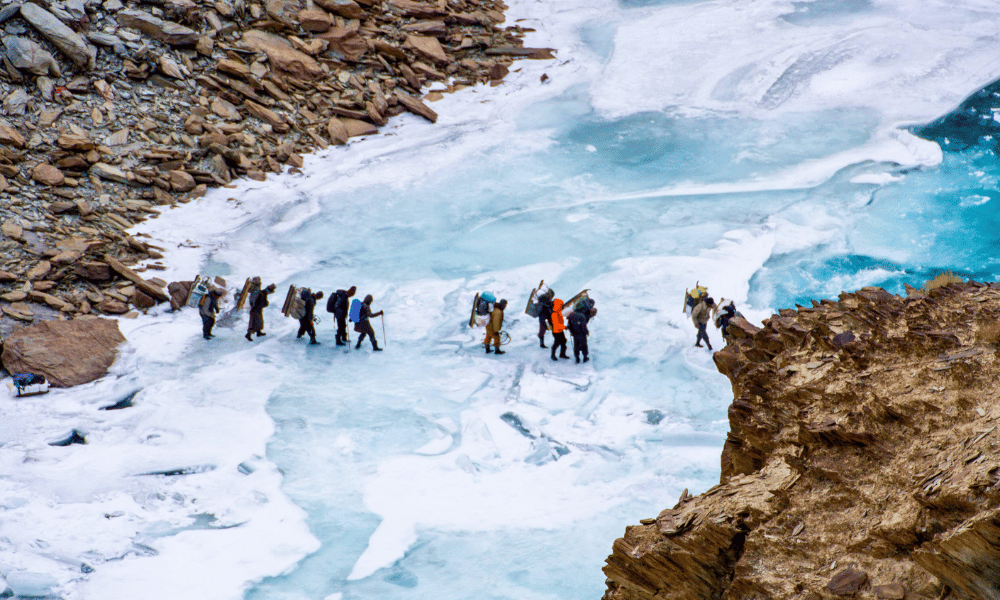
Trekking is not just an adventurous activity; it also brings a plethora of benefits to our physical health, mental well-being, and social interactions. Let's take a closer look at these benefits.
Improved Cardiovascular Health: Trekking is a cardiovascular exercise that helps improve heart health by strengthening the heart muscles and reducing the risk of heart disease.
Muscle Strengthening: The act of walking on different terrains while carrying a backpack helps strengthen various muscles in your body, particularly those in your legs, core, and lower back.
Improved Balance and Coordination: Walking on uneven surfaces enhances your balance and coordination, which can be beneficial in your day-to-day life.
Increased Stamina and Endurance: Long-distance trekking helps build your stamina and endurance, as you are constantly pushing your body to cover more distance.
Weight Management: Trekking burns calories and aids in maintaining a healthy weight, given its physically demanding nature.
Stress Relief: Trekking is an excellent way to reduce stress and anxiety. Physical exercise, coupled with being in nature, helps in the release of endorphins, also known as 'feel-good' hormones.
Increased Happiness: Studies have shown that physical activity and nature exposure can boost your mood and contribute to overall happiness.
Improved Mental Resilience: Overcoming the challenges encountered during a trek can foster mental resilience, making you more adept at handling stress and adversity in other areas of your life.
Team Building: Trekking in groups fosters teamwork and camaraderie. You learn to work together, help each other through challenging parts of the trek, and share the joy of achievement.
Community Engagement: Trekking often offers the chance to meet new people from diverse backgrounds. It also opens avenues for engaging with local communities along the trail.
Shared Experiences: The shared experiences and memories from a trek can forge strong bonds and friendships.
In essence, trekking is a holistic activity that caters to the overall well-being of an individual. It's an excellent way to maintain a healthy lifestyle, reduce stress, connect with people, and gain an appreciation for nature and different cultures. Whether you're a seasoned trekker or just starting, the benefits you reap from this activity extend well beyond the trails.
Being adequately prepared with the right gear is critical to ensuring a safe and enjoyable trekking experience. Here's a detailed list of the basic gear you should have, along with an explanation of why each item is important.
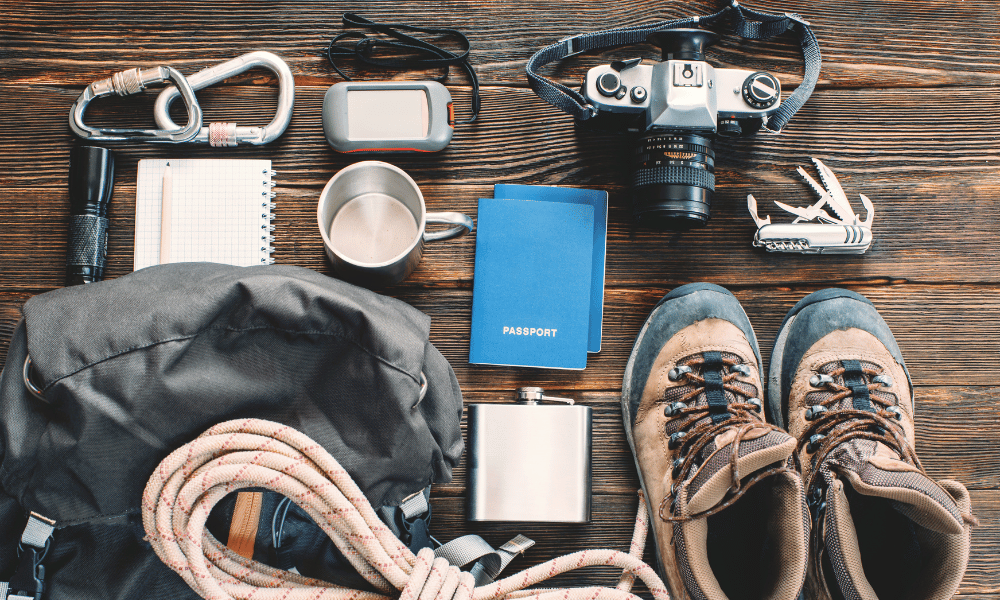
1. Backpack: A durable, comfortable backpack is the most basic necessity for any trek. It should have enough space to store all your gear and should fit comfortably on your back. It's worth investing in a backpack with adjustable straps and good back support to minimize strain on your shoulders and spine.
2. Trekking Shoes: Your feet will be doing most of the work, so investing in a good pair of trekking shoes is essential. These should be comfortable, water-resistant, and provide good ankle support and grip to navigate through different terrains.
3. Water Bottle/Hydration Pack: Staying hydrated is crucial when trekking. A reusable water bottle or hydration pack can help ensure you always have water at your disposal.
4. Maps and Compass: Even in the era of GPS and smartphones, having a physical map and compass is crucial for navigating in areas with poor signal or when your electronics run out of battery.
5. First Aid Kit: A basic first aid kit containing bandages, antiseptic wipes, tweezers, and common medications is a must-have for treating minor injuries or illnesses on the trail.
6. Multi-tool: A multi-tool that includes a knife, can opener, scissors, and more can come in handy in various situations during your trek.
7. Trekking Poles: Trekking poles can provide stability and balance while walking, reduce strain on your knees during descents, and assist during uphill climbs.
8. Weather-appropriate Clothing: Layering is the key to managing your body temperature during a trek. This includes moisture-wicking base layers, an insulating middle layer, and a waterproof and windproof outer layer. Don't forget a sun hat, gloves, and a warm hat for colder climates.
9. Food and Snacks: Carry enough food for your trek. This could include pre-packaged meals, high-energy snacks like nuts and dried fruit, and any necessary cooking equipment.
10. Emergency Shelter: A lightweight tent or bivvy bag can be a lifesaver if you have to unexpectedly spend the night outdoors.
When choosing your trekking gear, prioritize quality and durability over cost. High-quality gear will not only last longer but will also provide better performance and safety. Look for product reviews and ratings before making a purchase. Consider your specific needs in terms of the trek's duration, terrain, and weather conditions.
Remember, the right gear can make the difference between an enjoyable trekking experience and an uncomfortable or even dangerous one. Make sure you're adequately prepared before setting off on your trekking adventure.
Trekking is a physically demanding activity that requires careful preparation and respect for safety guidelines. Below, we've outlined advice on physical preparation, planning, and safety tips to consider before embarking on a trek.
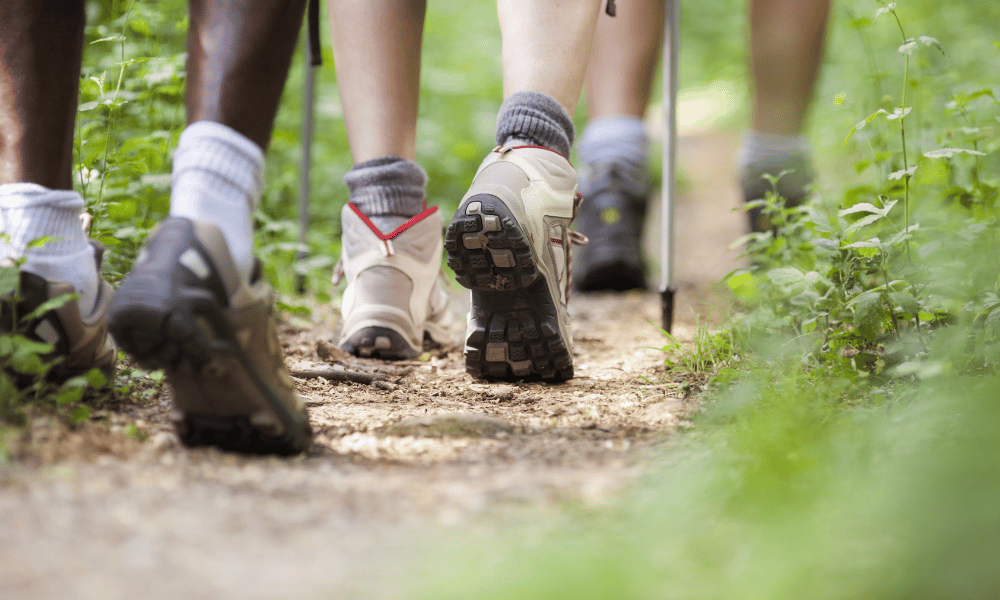
Training for a trek depends on its difficulty level and duration. Here are some general recommendations:
Cardiovascular Training: Include activities like running, cycling, and swimming in your routine to build stamina.
Strength Training: Focus on strengthening your core and lower body muscles. Exercises like squats, lunges, and step-ups can be beneficial.
Balance and Flexibility: Yoga and Pilates can improve balance and flexibility, which can help prevent injuries during the trek.
Practice Hikes: Go on shorter hikes with a loaded backpack to simulate the conditions of the trek.
Choosing a Destination: Consider your fitness level, trekking experience, budget, and personal preferences when choosing a trek. Research the difficulty level and typical weather conditions of potential treks.
Understanding Weather and Terrain: Check the weather forecast before you leave and be aware that weather in mountainous areas can change quickly. Research the terrain to understand what equipment you'll need.
Timing: Some treks are seasonal. Ensure you're planning to go at a time that's recommended for the trek to avoid dangerous conditions.
Stay on the Trail: Deviating from the trail can lead to getting lost or encountering dangerous terrain.
Recognize Signs of Distress: Understand the signs of common issues like dehydration, hypothermia, heat stroke, and altitude sickness.
Understanding Altitude Sickness: If you're trekking at a high altitude, familiarize yourself with the symptoms of altitude sickness and learn how to prevent it.
Inform Someone About Your Plans: Let someone know about your trekking plans, including the route you're taking and when you expect to return.
Respect Nature: Follow the principles of Leave No Trace to minimize your impact on the environment.
Remember, preparation and safety are key to a successful and enjoyable trekking experience. Always respect your own limitations and the power of nature. Happy trekking!
There are countless trekking destinations around the world, each with its unique appeal. From high-altitude challenges to cultural immersions, these trails offer something for every type of trekker. Here, we present an overview of some of the world's most renowned trekking destinations:
1. Everest Base Camp, Nepal: The Everest Base Camp trek is perhaps the most famous trek in the world, offering trekkers a chance to come face-to-face with the highest mountain on Earth. Despite its high difficulty level, it's a hit among adventurous souls, offering mesmerizing Himalayan landscapes and a rich Sherpa culture.
2. Inca Trail, Peru: This trek takes you through stunning Andean landscapes, cloud forests, and ancient Incan ruins, leading to the iconic Machu Picchu. The blend of natural beauty and historical significance makes it one of the world's most popular treks.
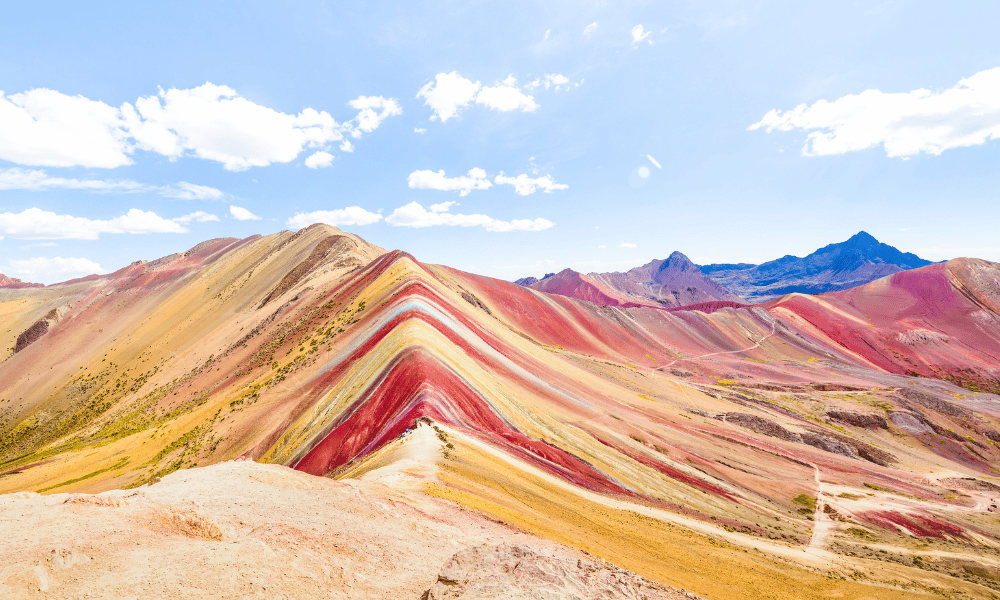
3. Kilimanjaro, Tanzania: Mount Kilimanjaro is the highest peak in Africa, and reaching its summit is an achievable goal for most determined trekkers. The trek takes you through various ecosystems, from rainforests to alpine deserts to a snow-capped summit.
4. The Appalachian Trail, USA: Stretching over 2,000 miles across 14 states, this trek is a favorite among long-distance trekkers. It offers diverse landscapes, from dense forests to mountainous terrains, and a vibrant thru-hiking community.
5. The Camino de Santiago, Spain: More than a trek, the Camino de Santiago is often undertaken as a spiritual journey. It offers a unique blend of beautiful landscapes, rich history, and cultural immersion as you walk through various towns and cities.
6. Annapurna Circuit, Nepal: This trek is famous for its diverse landscapes, including lush rhododendron forests, desolate high mountain passes, and terraced rice paddies. The Annapurna Circuit trek also offers an immersive experience of Nepal's diverse cultures.
7. Overland Track, Australia: This trek takes you through the heart of Tasmania’s wilderness world heritage area. It's known for its pristine lakes, extensive forests, majestic waterfalls, and diverse wildlife.
8. Kungsleden (The King's Trail), Sweden: This trek through Sweden’s most beautiful mountain landscapes is famous for its vast expanses, Northern Lights, and Sami culture.
9. Mont Blanc Circuit, France, Italy, Switzerland: This challenging trek offers stunning alpine scenery as you traverse through three different countries, each with unique cultural and gastronomic experiences.
10. Milford Track, New Zealand: Known as the 'finest walk in the world', this trek boasts of incredibly diverse scenery, from lush rainforests and crystal-clear rivers to towering peaks and deep glacial valleys.
These destinations offer a taste of the vast array of trekking experiences available worldwide. When choosing a trek, consider not just the physical challenge but also the cultural experiences, natural beauty, and unique aspects you are likely to encounter along the way.
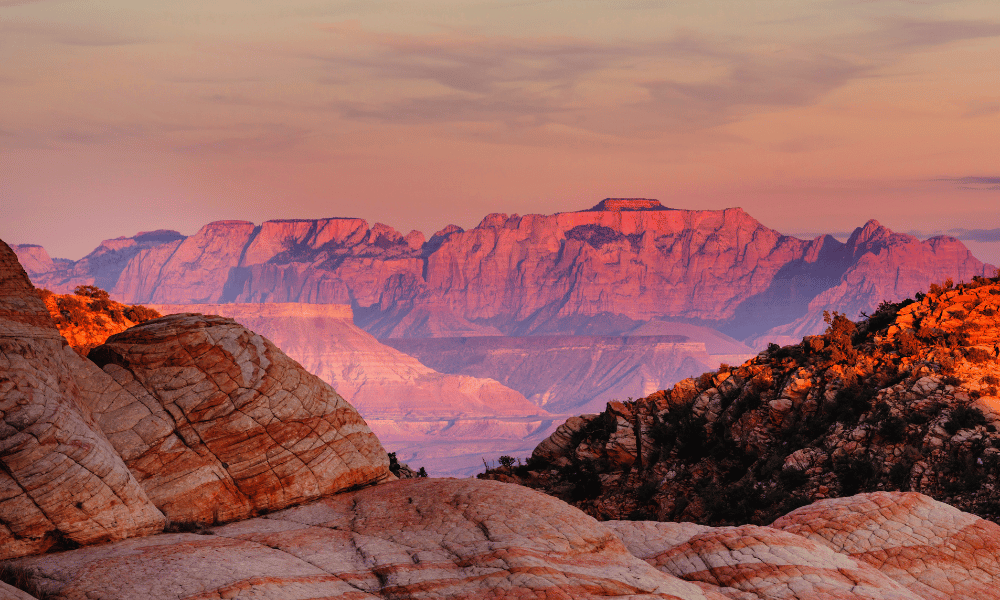
As trekkers, we have a responsibility to protect and preserve the natural environments we visit. This is where the "Leave No Trace" principle comes into play. Originated from the backcountry setting, it has since expanded to encompass all recreational outdoor activities.
1. Plan Ahead and Prepare: This involves researching the area you'll be trekking in, understanding what to expect, and packing accordingly. This helps minimize damage to the environment and ensures your safety.
2. Travel and Camp on Durable Surfaces: Stick to established trails and campsites. Walking and camping on durable surfaces like established trails, rock, gravel, dry grass, or snow minimizes damage to vegetation and prevents erosion.
3. Dispose of Waste Properly: "Pack it in, pack it out." Any waste you generate during your trek, including food scraps, should be packed out. In certain situations, human waste may need to be buried or carried out.
4. Leave What You Find: Do not disturb natural or cultural artifacts. This includes flowers, rocks, historical structures, etc. The goal is to leave the place as you found it for future trekkers to enjoy.
5. Minimize Campfire Impact: Campfires can cause lasting impacts and can be a fire hazard. Use a lightweight camp stove for cooking and a headlamp or flashlight for light. If you must have a fire, use established fire rings and keep fires small.
6. Respect Wildlife: Observe wildlife from a distance and do not feed animals. Human food is harmful to wildlife and feeding them alters their natural behavior.
7. Be Considerate of Other Visitors: Respect other visitors and protect the quality of their experience. Keep noise levels low and allow others to pass on trails.
By following these principles, we can ensure that we're minimizing our impact on the natural environment and preserving these places for future generations of trekkers to enjoy. Remember, nature is not ours to take from; it's ours to appreciate, respect, and protect.
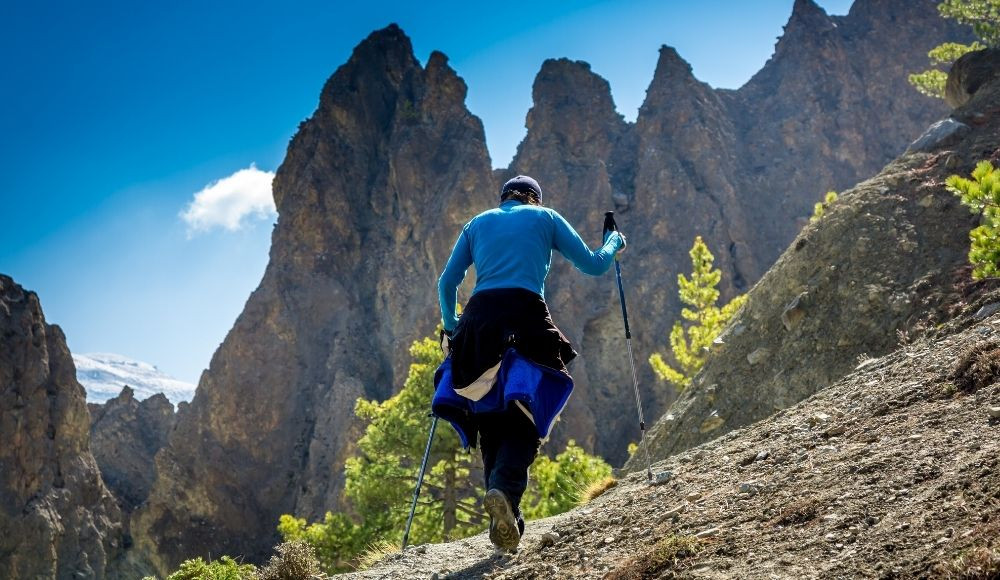
Trekking is an exciting and rewarding activity that offers a range of benefits, from physical fitness and mental well-being to cultural immersion and forging deep connections with nature. Throughout this blog, we've explored what trekking involves, its rich history, and the motivations that draw people to it. We've also delved into the vast array of benefits it offers, both physically and mentally, along with the essential gear you need to undertake a trek safely.
We discussed the importance of preparation, including physical training, planning your trek, and understanding vital safety measures. We also explored some of the most stunning trekking destinations worldwide, each unique in its landscapes, challenge levels, and cultural aspects.
In our final section, we emphasized the critical responsibility that each trekker holds toward the environment. Adhering to the "Leave No Trace" principle ensures that these beautiful landscapes remain conserved for future generations to experience and enjoy.
If you're seeking a hobby that challenges you, provides an avenue for adventure, offers ample opportunities for self-discovery, and brings you closer to nature, trekking might be the perfect fit. Whether you choose to take on the rugged trails of Everest Base Camp or the spiritual paths of the Camino de Santiago, remember that every journey begins with a single step.
As you venture out and explore the natural wonders around you, remember that each trek is not just about the destination; it's also about the journey. Embrace each moment, challenge, and scenic view along the way. Happy trekking!
While both involve walking in natural environments, the terms are often differentiated by duration and difficulty. Hiking usually refers to day-long walks on well-marked trails, while trekking is typically more strenuous, can last several days, and often involves more challenging terrain or altitude.
While a basic level of physical fitness certainly helps, trekking can be enjoyed by individuals of varying fitness levels. It's important to choose a trek suitable for your current fitness and gradually work up to more challenging treks.
Basic trekking gear includes a good pair of trekking shoes, a backpack, appropriate clothing, a water bottle, maps, and a compass. Depending on the trek, you might also need camping gear, a first-aid kit, and navigation tools.
Yes, children and older adults can certainly enjoy trekking, provided they are in good health. It's important to choose treks that are suitable for their fitness level and age. Remember, the idea is to enjoy the journey, not to rush to the destination.
Trekking is generally safe as long as you are well-prepared, stick to the marked trails, and follow safety guidelines. Always inform someone about your trekking plans and estimated return time.
Begin with physical preparation several weeks before the trek. This includes cardiovascular training, strength training, balance exercises, and practice hikes. Research the trek thoroughly, including weather conditions, difficulty level, necessary gear, and safety tips.
Altitude sickness is a condition that can occur when you ascend to high altitudes quickly. Symptoms include headaches, nausea, dizziness, and shortness of breath. You can prevent altitude sickness by ascending gradually, staying hydrated, eating a high-carbohydrate diet, and descending immediately if you start to show symptoms.
The 'Leave No Trace' principle is an ethical framework used to guide decisions about outdoor behavior. The main idea is to leave the environment as you found it, causing minimal impact. It includes principles like disposing of waste properly, staying on trails, respecting wildlife, and being considerate of other visitors.
Popular trekking destinations include the Everest Base Camp in Nepal, the Inca Trail in Peru, Mount Kilimanjaro in Tanzania, the Appalachian Trail in the USA, and the Camino de Santiago in Spain. Each of these offers unique landscapes and challenges.
Follow the 'Leave No Trace' principles: stick to designated trails, camp in designated areas, carry out all trash, respect wildlife, and be considerate of other trekkers. Additionally, consider using eco-friendly gear and minimize the use of non-renewable resources.